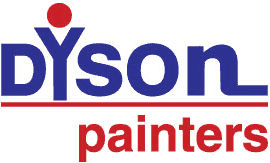Before we understand how airless spray painting works, let us read through the definition of airless spray painting. To put it in layman’s terms, Airless spray painting uses material pressure without air interference.
A pneumatic pump, electric tube, or petrol engine puts the content under pressure to force a defined quantity of material. The maximum pressure at which the liquid is pushed is 250 bar via a tip bore. The pressure transforms the liquid into a spray.
This painting technique is relatively new and requires less effort to paint. It is faster and less laborious. While the traditional style of painting is still trusted by many, airless spray painting is also gaining momentum.
Since we are now familiar with airless spray painting, let us dive deeper to understand its function of the same. We will also tell you what materials are required for airless spray painting and what are the various applications of airless spray paint.
1. Everything You Need to Know About Airless Spray Painting
Step-by-step Functioning of an Airless Spray Paint
- A strong pump is fixed towards the tube’s nozzle to bring the paint to a pressure of 250 bar.
The paint then spurts out from an airless spray gun in a controlled manner. - When the tube’s nozzle (gun) is opened, the paint is forced out via an opening in the vacuum tip of a size relevant to the requirements.
The atomization of paint particles occurs due to the pressure difference between the atmosphere and paint. - The radius of the spraying tip determines the flow rate of paint from the spray jet.
2. What Materials Are Used For Airless Spray Painting?
Various paint materials are used in airless paint sprayers. To summarize it for your understanding, we have jotted down a few basics below:
- Water and soluble paints, oils, varnishes, separating agents, and lacquers
- 2-K Lacquers, synthetic resin-made paints, and PVC paints
- Fillers and primers
- Corrosion-free paints and fireproof paints
- Adhesive, latex paints, emulsion, and sealants
- Floor coats, Masonry paint, silicon and resin paint, and roof linings
- Other high-viscosity materials
3. What are the Various Applications of Airless Spray Painting?
Airless paints are highly adaptable to all kinds of surfaces and are fit for all sorts of applications. Whether for your interiors or your exteriors, airless spray painting can be applied to the following surfaces, for example:
- Airless spray paintings are commonly used for radiators
- Airless spray painting also finds its application in painting doors, windows, cabinets, etc
- Some people also use airless spray painting to paint their vehicles, such as a car or a truck
- Walls and ceilings are also painted using fine airless spray paint. Professional painters are found to use both airless spray paint and the traditional method of painting, as the project demands.
- Wood and steel constructions also sometimes use airless spray paint to neatly fabricate their equipment or repaint them
- Airless spray painting is commonly used for painting property exteriors
- Some people also paint brickwork with airless spray paint
- Roof linings are very convenient to paint if you are using the airless spray painting method
Find Airless Spray Painters in Hobart, Australia
Dyson Painters is the best possible choice if you are looking for the best professional painters in Hobart. Dyson Painters are people’s first preference in the list of professional painting contractors in Australia. Our performance in airless spray painting projects has earned us a name over the years.
Our highly skilled professional painters have complete knowledge and experience to overcome any painting hurdles. We guarantee your money is put in the right place as we believe in providing quality work.
Contact us today at admin@dysonpainters.com.au or call us at 0420 213 214 to get in touch! We are happy to help you!
Also Read:
Guide to Efficient Airless Spray Painting Techniques (+ FAQs)
How Airless Spray Painting Can Help You Save Time and Money
Everything You Need To Know About Airless Spray Painting



